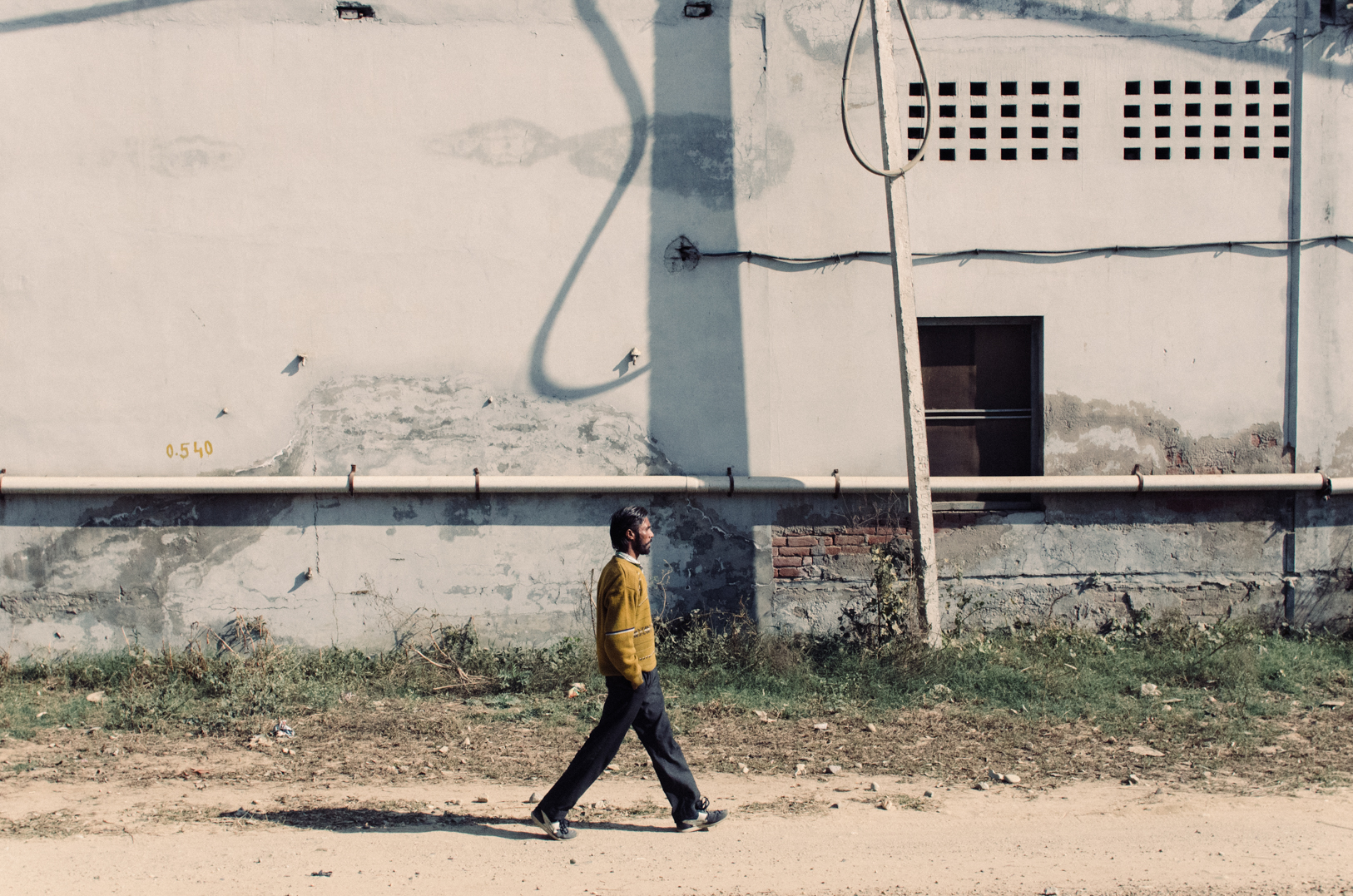A 43-hour train journey through the heart of India
- Text by David Mulnard
- Photography by David Mulnard

For a while, I’d been thinking: which country, to me, represented the complete unknown?
Which country would make me go out of my comfort zone, which country would push me to my limits? The answer, in the end was India. So, I left my home during the December of 2017, arriving in New Delhi with any contacts, or an address. I was lost.
The day after landing I flew to Srinagar in the north of the country, before heading on to Kashmir for a week’s stay. While I was there, my host booked me a journey: a two-day trip from Amritsar to Mumbai. It was here that the real journey began.
 The train – the Golden Temple 12904 – arrived in the morning, pulling into the station as the sun beamed down. My carriage was in ‘the sleeper class’ – the section that tends to be used by the country’s middle-class.
The train – the Golden Temple 12904 – arrived in the morning, pulling into the station as the sun beamed down. My carriage was in ‘the sleeper class’ – the section that tends to be used by the country’s middle-class.
As the train started moving and we embarked on our journey, I was able to witness the lively scenes that make up an Indian morning – ordinary occupations for the locals, but a completely new and amazing world for me. Loud noises, dusty roads, hundreds of scenes playing out in front of me.
The train’s average speed was 50 km/h, meaning I was able to step out onto the carriage, look outside and take photos. The gigantic territory that made up my route consisted of numerous small villages, in which life is organised around the railway. For many, the train is an attraction: everybody stops and watches when the iron box passes by.
 There were 99 stops in total, meaning countless different faces got on and off throughout the journey. The closer to Mumbai I got, the less space in the carriage I had. All sorts of people, selling all sorts of goods, ran up and down the corridors – shouting “Chai, chai!”, or “Samosas, samosas!”
There were 99 stops in total, meaning countless different faces got on and off throughout the journey. The closer to Mumbai I got, the less space in the carriage I had. All sorts of people, selling all sorts of goods, ran up and down the corridors – shouting “Chai, chai!”, or “Samosas, samosas!”
Indian train journeys are made up of sounds, smells, colours and lots of encounters. My fellow travellers gave me food. They didn’t feel embarrassed to share a seat, or sleep beside each other either. Space on the Golden Temple 12904 is rare – I quickly understood that privacy is a notion that doesn’t exist inside the carriages. It’s part of what makes the trip so special.
After 43 hours, we finally reached Mumbai. However, as everyone left the train, I decided to stay behind and enjoy the quietness they’d left behind. Soon enough, I found myself alone with the cleaners – the last actors to appear on stage in this grand performance. To travel by train in India is to be close to people: it is to feel the energy of an entire country.






 See more of David Mulnard’s work on his official website.
See more of David Mulnard’s work on his official website.
Enjoyed this article? Like Huck on Facebook or follow us on Twitter.
You might like

Largest-Ever Display of UK AIDS Memorial Quilt Opens at Tate Modern
Grief Made Visible — Comprising hundreds of panels made by lovers, friends and chosen family, the UK AIDS Memorial Quilt returns in full for the first time since 1994 – a testament to grief, friendship and the ongoing fight against HIV stigma.
Written by: Ella Glossop

In Medellín’s alleys and side streets, football’s founding spirit shines
Street Spirit — Granted two weeks of unfettered access, photographer Tom Ringsby captures the warmth and DIY essence of the Colombian city’s grassroots street football scene.
Written by: Isaac Muk

Remembering New York’s ’90s gay scene via its vibrant nightclub flyers
Getting In — After coming out in his 20s, David Kennerley became a fixture on the city’s queer scene, while pocketing invites that he picked up along the way. His latest book dives into his rich archive.
Written by: Miss Rosen

On Alexander Skarsgård’s trousers, The Rehearsal, and the importance of weirdos
Freaks and Finances — In the May edition of our monthly culture newsletter, columnist Emma Garland reflects on the Swedish actor’s Cannes look, Nathan Fielder’s wild ambition, and Jafaican.
Written by: Emma Garland

Why Katy Perry’s space flight was one giant flop for mankind
Galactic girlbossing — In a widely-panned, 11-minute trip to the edge of the earth’s atmosphere, the ‘Women’s World’ singer joined an all-female space crew in an expensive vanity advert for Jeff Bezos’ Blue Origin. Newsletter columnist Emma Garland explains its apocalypse indicating signs.
Written by: Emma Garland

We are all Mia Khalifa
How humour, therapy and community help Huck's latest cover star control her narrative.
Written by: Alya Mooro

